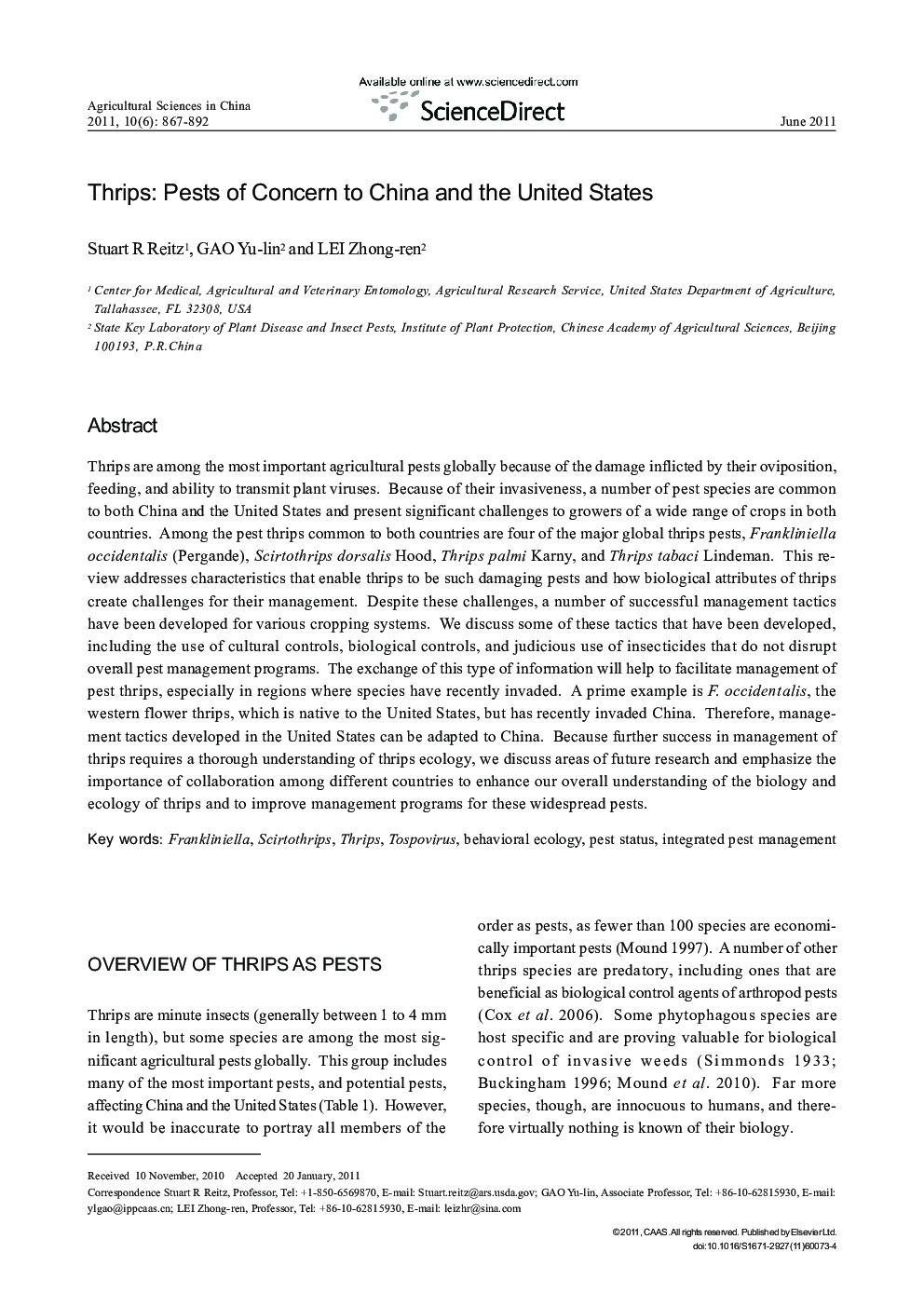| Article ID | Journal | Published Year | Pages | File Type |
|---|---|---|---|---|
| 4489944 | Agricultural Sciences in China | 2011 | 26 Pages |
Thrips are among the most important agricultural pests globally because of the damage inflicted by their oviposition, feeding, and ability to transmit plant viruses. Because of their invasiveness, a number of pest species are common to both China and the United States and present significant challenges to growers of a wide range of crops in both countries. Among the pest thrips common to both countries are four of the major global thrips pests, Frankliniella occidentalis (Pergande), Scirtothrips dorsalis Hood, Thrips palmi Karny, and Thrips tabaci Lindeman. This review addresses characteristics that enable thrips to be such damaging pests and how biological attributes of thrips create challenges for their management. Despite these challenges, a number of successful management tactics have been developed for various cropping systems. We discuss some of these tactics that have been developed, including the use of cultural controls, biological controls, and judicious use of insecticides that do not disrupt overall pest management programs. The exchange of this type of information will help to facilitate management of pest thrips, especially in regions where species have recently invaded. A prime example is F. occidentalis, the western flower thrips, which is native to the United States, but has recently invaded China. Therefore, management tactics developed in the United States can be adapted to China. Because further success in management of thrips requires a thorough understanding of thrips ecology, we discuss areas of future research and emphasize the importance of collaboration among different countries to enhance our overall understanding of the biology and ecology of thrips and to improve management programs for these widespread pests.
